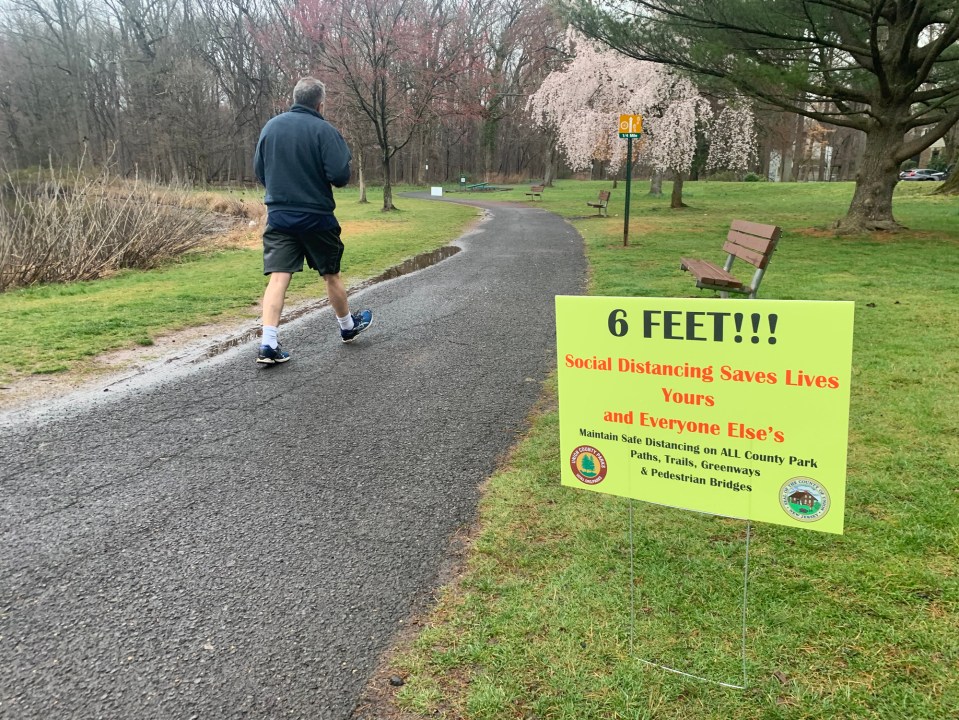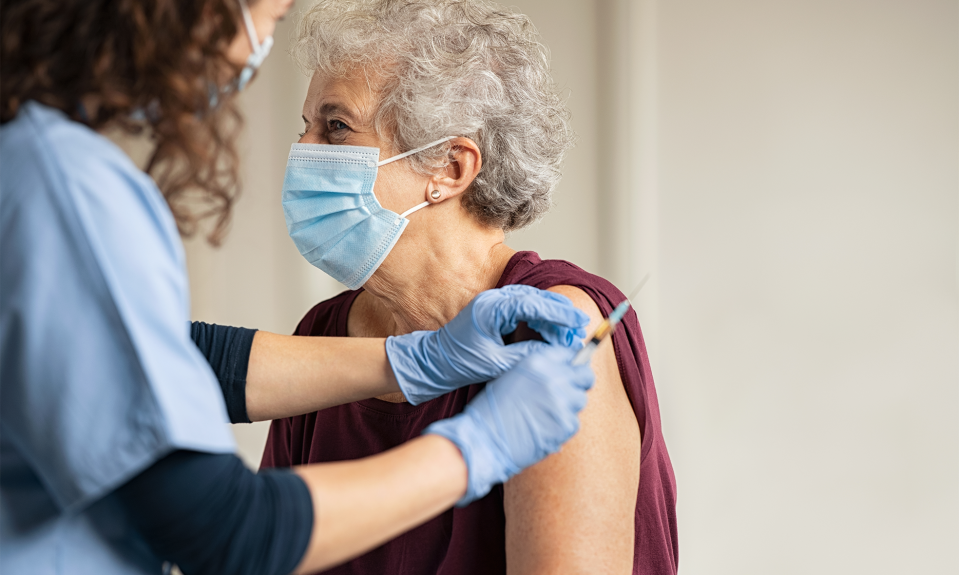While many have taken to exercising outdoors as a respite to shelter in place orders, some may question how safe it is to enjoy the outdoors at this time.
Staying active is a smart way to support the immune system and relieve stress. Doing so outdoors gives us exposure to vitamin D, which can also boost the immune system.
According to the CDC, exercising outside is safe, as long as you take precautions to protect yourself and others from the virus.
Here’s what we know
COVID-19 spreads through respiratory droplets
According CDC, COVID-19, the coronavirus is passed from person to person within 6 feet through respiratory droplets when someone coughs, sneezes or talks, or when the virus settles on a surface and is touched by a person who then touches his or her face. The virus can survive once it lands, but for how long depends on the surface.
Washing hands kills germs
Spending 20 seconds washing your hands, especially in a public place, after touching your face, or after blowing your nose, coughing or sneezing, can help you stay safe. Keeping hand sanitizer with at least 60% alcohol in your purse, backpack or pocket is a great alternative when soap and water aren’t available.
Wearing a mouth and nose covering helps prevent virus spread
The CDC recommends wearing a cloth face covering in public settings where social distancing is difficult to maintain. Face masks should be disposed when damp or wet from mucus or spit.
Maintaining six feet of distancing in all settings helps slows the spread
Adding this new rule to daily outings has become the staple of COVID-19’s safety plan. And it’s not just for grocery stores and curbside pick-up. Walking trails and cycling lanes count, too.
An active lifestyle helps fight disease
Over years, many studies have shown that exercise helps the immune system find and deal with pathogens, reducing the risk of infections. Perhaps that’s another reason why the CDC recommends adults get at least 150 minutes of moderate-intensity aerobic physical activity, or 75 minutes of vigorous-intensity physical activity, or an equivalent combination each week. Exercise also benefits mental health, which continues to be an unsettling side effect of COVID-19.
How to stay active and healthy outdoors
When the sunshine calls you outside to get moving, it’s important to know your most current local and state announcements for shelter-in-place orders, closures and openings.
Once you’re in the know, be sure to follow 6-feet social distancing, avoid groups, wash your hands often, wear a cloth face covering if distancing is hard to maintain, and stay home if you feel sick.
With good practices in place, it’s time to pick your activity.
Running, walking and cycling
You’re in luck. As long as you follow recommended protocol, it is considered safe to run, walk and cycle during COVID-19.
The CDC recommends avoiding group outings, crowded areas and narrow paths, while – say it together – maintaining 6 feet of distancing. Timing for your outings is important, too. Schedule activity for when paths are less crowded.
Swimming
Great for the body, swimming offers a fun way to get in shape. Better yet, there’s no evidence that COVID-19 can spread to humans through the water, especially when it is disinfected. Keep in mind, social distancing is just as important in the pool as it is on land. You should also continue proper hand washing guidelines after bathroom breaks, eating, and coughing or sneezing.
Group and organized sports
Noting all of the recent sporting event cancellations, you’ve got your answer on this one. Until further notice, you’ll have to stick to watching reruns.
Playgrounds
Often known to be crowded and a haven for the spread of viruses and bacteria, playgrounds continue to be off limits under most shelter-in-place orders. That doesn’t mean you can’t be creative in your own backyard with clever ideas for obstacle courses, relays, sprinkler fun and family-friendly games.
Parks, beaches and lakes
The CDC recommends that you only visit these areas when they are close to home, avoiding fuel and food stops along the way. But first, do your research to make sure your destination is open and if any special regulations are in place. Practice hand washing skills and social distancing once you get there. If you feel sick or have been exposed within 14 days to someone with COVID-19, it’s best to take a raincheck.
Walking the dog
With 89.7 million dogs owned in the U.S., many people get their workout in while walking their dog several times a day. While that’s OK when practicing social distancing guidelines, the CDC recommends preventing pets from interacting with people or animals outside their homes, keeping cats indoors and dogs out of dog parks, for instance. Should you pet the dog of a person with COVID-19, you have reason to relax. According to the CDC, there is no evidence that animals play a significant role in spreading the virus that causes COVID-19.
Keep in touch for guideline updates
Information on the COVID-19 outbreak is updated daily. Stay connected with your local public health recommendations and current health mandates in your area. You can find the directory to state departments at https://www.usa.gov/state-health.
Consult the CDC’s website frequently for any updated guidance on COVID-19.
The content of this site is for informational purposes only and should not be taken as professional medical advice. Always seek the advice of your physician or other qualified healthcare provider with any questions you may have regarding any medical conditions or treatments.


